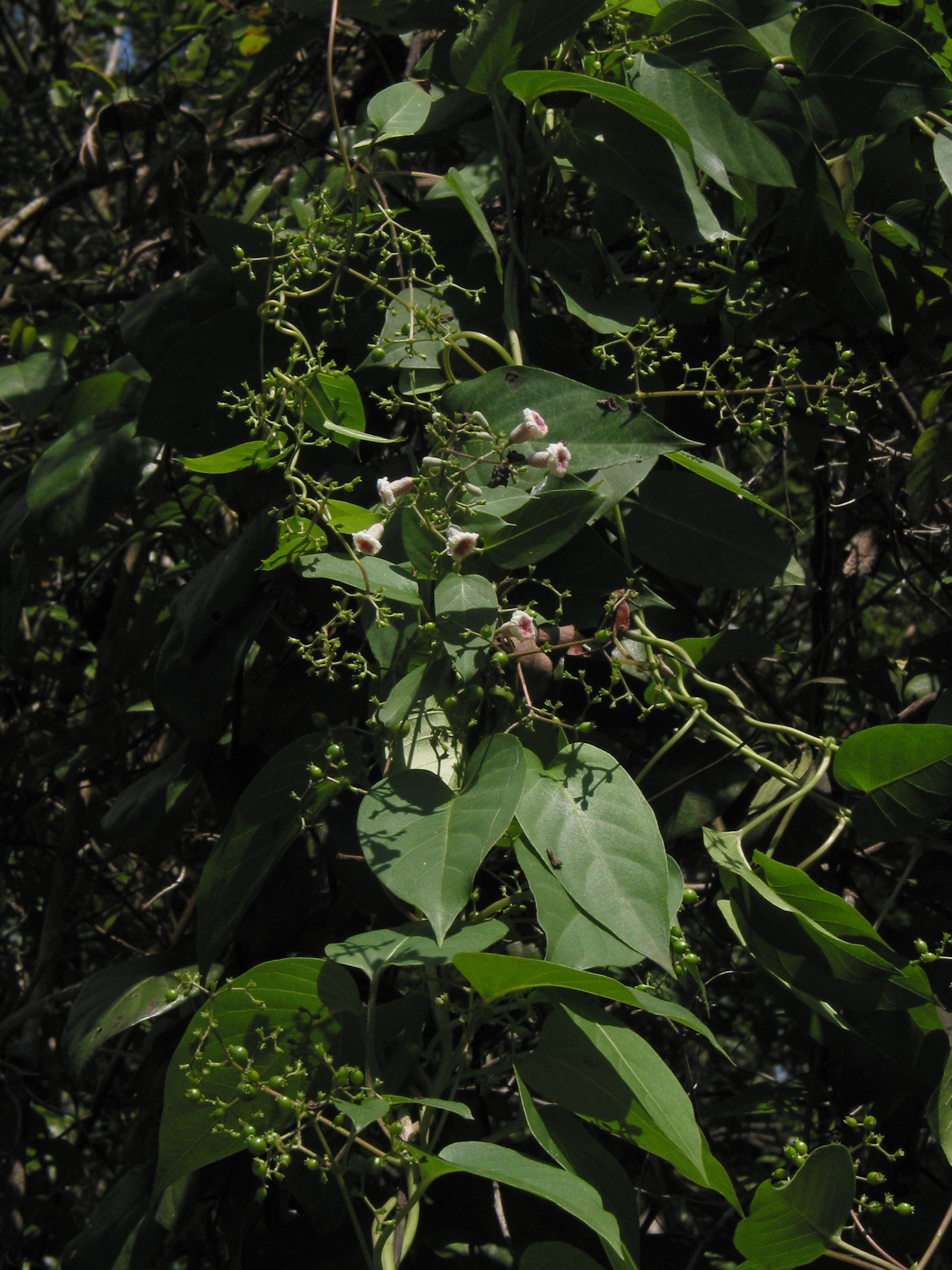Paederia foetida


Common Name: skunkvine
Family: Rubiaceae
Common Synonyms: none
USDA Hardiness Zone: 11- 9
Growth Habit: Vine
Origin: Eastern and southern Asia
FISC Category: 1
FDACS Listed Noxious Weed: Yes
Introduction Date: Before 1897.
IFAS Assessment:

Semi-woody vine, climbing by twining, or prostrate and rooting at the nodes, stems to 7 m or more long. Leaves opposite (rarely in whorls of 3), stipules conspicuous, petioles to 6 cm long, blades entire, oval to linear-lanceolate, 2-11 cm long, hairy or glabrous, often lobed at the base. Leaves and stems with fetid odor, especially when crushed. Flowers small, pedunculate, corolla tubular with 5 spreading lobes grayish pink or pale lilac with darker throat, outer surface pubescent. Fruit shiny, yellowish-orange, subglobose, to 7mm wide capsule. Seeds 2, black, round, not winged.
Sandhill, floodplain, upland mixed forest.
Recently spreading into parts of North Florida.

NA
Langeland, K.A., H.M. Cherry, C.M. McCormick, K.C. Burks. 2008. Identification and Biology of Non-Native Plants in Florida's Natural Areas-Second Edition. IFAS Publication SP 257. University of Florida, Gainesville, Florida.NA
Langeland, K.A., J.A. Ferrell, B. Sellers, G.E. MacDonald, and R.K. Stocker. 2011. Integrated management of non-native plants in natural areas of Florida. EDIS publication SP 242. University of Florida, Gainesville, Florida.
